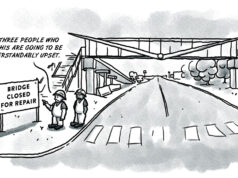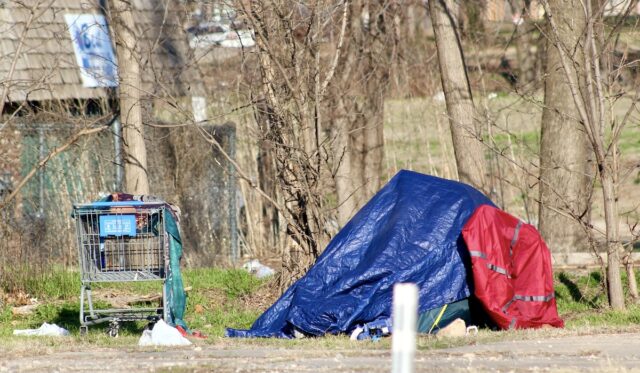
Sitting inside his new home for the first time, Mark Wood still feels a little overwhelmed, but he is breathing easier than he has in some time.
Wood spent the better part of the last 18 months on Oklahoma City streets following a cascade of calamities and bad luck that caused his life to careen into uncertainty.
To start things off, the transmission went out in Wood’s car, a problem he could not afford to fix. Not long after that, he lost his job of nearly 15 years when the company he worked for abruptly shut down without notice and left him without a paycheck. Eviction followed, and he found himself on the streets.
“It all happened over a few months,” he said. “I don’t think I ever saw it coming.”
Today, Wood is in a new home, one of the early participants in Key to Home, the latest strategy aimed at lifting 500 of the most chronically homeless people from OKC streets and into housing over two years.
As of early March, the Key to Home program has assisted 88 formerly unhoused people to find four walls and a roof to call their own. Wood is one of them, and the feeling of being able to have a shot at a fresh start is all he ever wanted.
“When I come in and shut the door, there is peace of mind,” Wood said. “I can sleep. I can get rest for the first time in a while.”
Wood was one of millions of Americans who are at high risk for potential homelessness. Just 44 percent of those surveyed by Bankrate could afford to pay for a $1,000 emergency. A 2019 survey by Prosperity Now found that 40 percent of Americans are just one missed paycheck away from losing their home.
And with pandemic aid now squarely in the rearview mirror, homelessness across the United States is picking up, with a 12 percent increase in the country’s homeless population over 2022. About 653,000 people were homeless last year in the United States, an increase of about 70,000 from 2022.
Key to Home aims to cut OKC homelessness by 70 percent
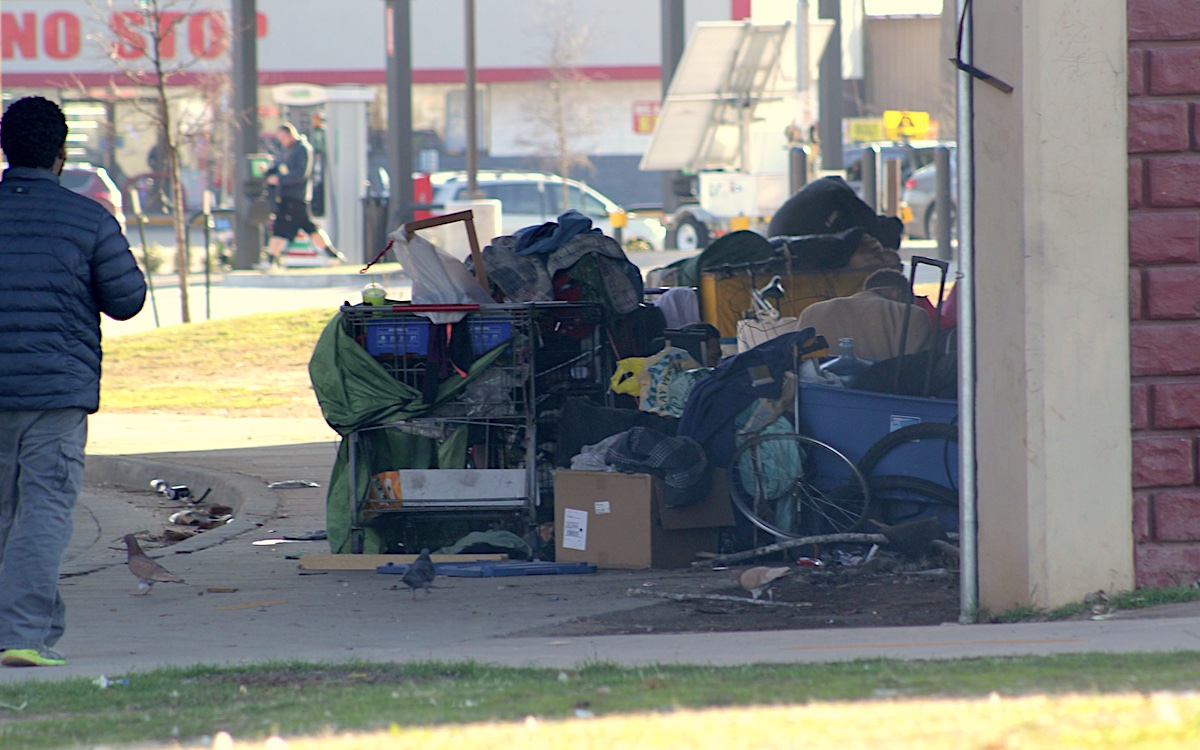
Key to Home’s goals are simple: Get people into housing, stabilize their lives, and help them solve problems that drew their path to the streets in the first place. Those efforts can encompass career training, job placement, and mental health and substance abuse resources. Each participant is assigned a caseworker for one year.
The program’s execution is straightforward. Outreach teams visit encampments and begin helping those living there with basic needs like acquiring an ID. This general outreach effort also includes referrals to agencies that can assist them. Beyond encampments, outreach teams also target hot spots where panhandling often occurs.
RELATED
As OKC grows, rising costs create housing insecurity by Matt Patterson
The final part of the process involves clearing the encampment after everyone living there has been assisted. If others gather in an area that has been cleared, they are visited by outreach teams to connect them with resources.
Lindsey Cates, who was tasked with implementing the city’s strategies on homelessness before taking a new job as director of community programs for the Oklahoma City Community Foundation, said one of the Key to Home program’s advantages is speed.
“We believe it is faster, and the people that have been housed in this pilot over the last year have been housed in three to six weeks directly from the encampment,” Cates said.
The results have drawn praise.
“It’s going very well,” OKC city manager Craig Freeman said. “When you look at the goal, which is to house the most chronically homeless and provide them with wraparound services that can help them get where they want to be, it’s very achievable and something that I know a lot of people are working very hard on. So far, the results have been good.”
Freeman said cities like Oklahoma City have had to adapt to meet the challenges of both affordable housing and the unhoused population.
“I think people have become more broadly accepting of efforts to address homelessness and shift to strategies that reflect that, and we have seen those efforts here through our city leadership from Aubrey McDermid and Clutch Consulting,” Freeman said. “The community has come together, and I think the strategy has shown that it can work when people come together in that way.”
‘Don’t make promises you can’t keep’

While the Key to Home program is simple enough, that doesn’t make execution easy. Much of the program’s success or failure with potential clients stems from that first-blush contact between outreach teams and people living in an encampment.
On an early September morning, Jennifer Beach and Sam Dyer made their way to southwest Oklahoma City to an encampment not far from Will Rogers World Airport.
Beach serves as lead outreach specialist for the Homeless Alliance, which has become one of the city’s most vital organizations combatting homelessness. What began as a group of small volunteers has grown into an organization that serves about 75,000 meals each year while providing the city’s unhoused population with a winter and day shelter.
The Homeless Alliance also operates programs like the Curbside Chronicle, a “street newspaper” sold by those either experiencing homelessness or at risk for it across the city. Combined with its flower shop, Curbside offers a way for participants to develop money management and social skills while also providing a source of income.
Learn more:
OKC’s Key to Home
The encampment Beach and Dyer visited that steamy September morning would likely never be seen by those passing by. But a break in the curb and a crude dirt path led to an an abandoned camper and a small group of people a few hundred yards off the road.
Hidden by trees, a few tents provided housing for a couple and their adult son who deals with a seizure disorder. The family fell on hard times amid the COVID-19 pandemic when both parents lost their jobs.
Beach and Dyer’s faces were familiar to the family. They had helped the woman’s sister with housing previously, and their two-person team spent two hours talking to those at the encampment a week or so before this September visit. Conversations ensued about obtaining photo identification, one of the most important pieces when reassembling someone’s housing puzzle.
“It’s a gateway to everything,” Dyer said. “It’s hard for them to get it a lot of the time. But you have to have an ID to get food stamps, and you have to have an ID to scrap metal, which is something they have to do sometimes to make money. You can’t do any of that without an ID.”
While IDs are a hot commodity, so is trust, and that’s what Beach and Dyer spend a lot of time building on visits like this. Sometimes that trust comes easily, like it has with the family whose son has seizures. But more often than not, the progress is measured in small steps.
“One of the things that we run into is people that are reluctant to talk to us,” Beach said. “A lot of the time, people will think that outreach is bringing out food to people or supplies. That’s something that a lot of ministries do, but our goal is to try to get them into services and work toward documents and housing. We do bring some things with us to hand out as initial engagement pieces, but that’s not typically our primary focus.”
While the family they encountered that morning in September was open to a conversation, others living in the camper were less willing to engage. Eventually, the visit was punctuated with some shouting between one of the men in the camper and the father. When those moments happen, Beach and Dyer try to quell the stress as quickly as possible. That day, Dyer approached one of the men in the camper with an offer of water and a question about whether there’s anything else he needs. Within a minute or two, the incident was over.
“Sometimes those situations do happen, and that it happened today is kind of surprising to me because of the tightness of this camp,” Dyer said. “They all know each other and have worked together, but it happens sometimes. But you have to de-escalate in those situations, and if you can’t, it’s best to leave the area.”
In all, the visit lasted about 20 minutes. Beach and Dyer gave the family snacks, toiletries and dog food for the half-dozen newly born puppies frolicking around the camp. The engagement was brief but positive, with at least one more layer of trust built between the outreach team and the family.
“In this line of work, you don’t make promises that you can’t keep. So, that means a lot of the times these folks don’t trust people, because they’ve been burned before with people saying they will help but not following through,” Beach said.
OKC finds a guide in Houston housing program
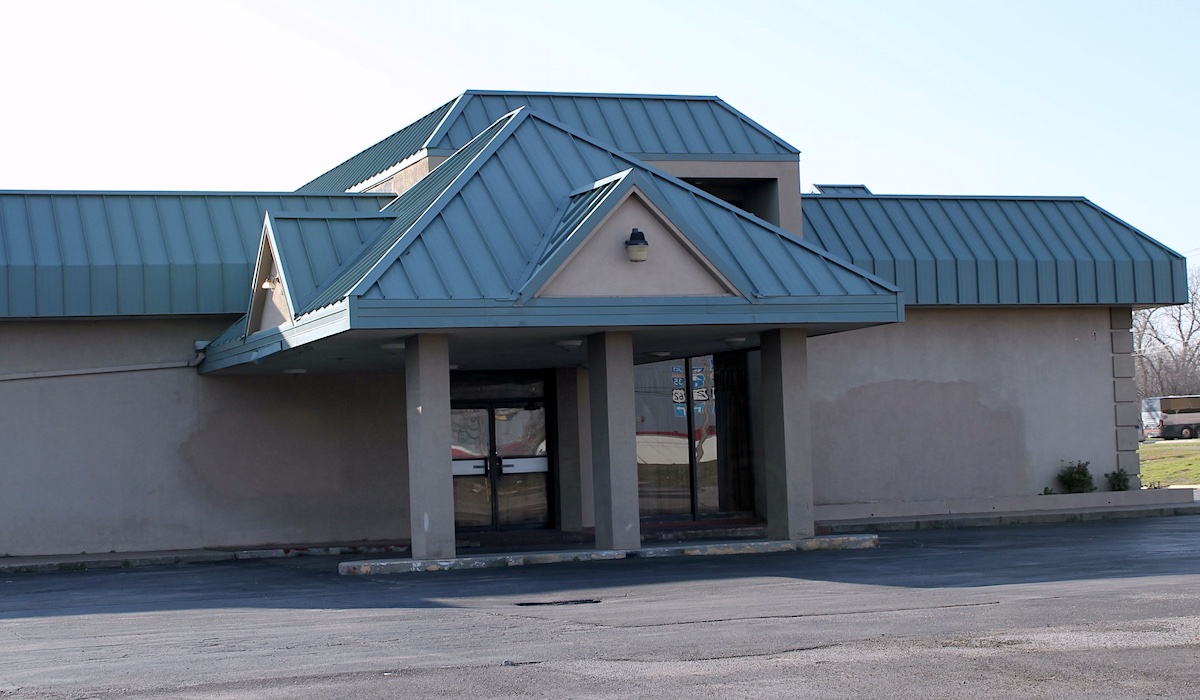
Among American cities, Houston has gained recognition and seen results after adopting a housing-first model to address homelessness. Over the last decade, more than 25,000 unhoused people have been moved into places to live. Since 2011, Houston has cut its homeless population by 63 percent, according to the New York Times. San Diego has also adopted the strategy, moving about 11,000 people into homes since 2017.
In 2021, Dallas City Council members approved a $72 million plan to place 2,700 people experiencing homelessness into permanent housing.
But while the effort may be there, money often is not. For OKC’s Key to Home pilot program, the spending breakdown includes $6.9 million for rental subsidies, $2 million for stabilization services such as case managers, $1 million for moving kits and landlord incentives, and $1.3 million for management and administration.
The cost to house someone in the Key to Home program is about $24,000, which includes calculation of outreach employee salaries, rental payments and the move-in kits that include basic household supplies and furniture.
To find housing opportunities for those in need, landlords often must be negotiated with, and sometimes they are paid hold fees to keep units available for those entering the Key to Home program.
“Dallas put $70 million on the table, and then over a couple of years the [U.S. Housing and Urban Development agency] awarded them another $23 million,” Cates said. “So, to me, the hope is we can leverage those public and private dollars and we can get more federal funds. We know that federal funds always come with limitations, and so that’s where the community itself can step up and say these dollars can help in a different way. That’s the blend of public and private that we’re going to need.”
Follow @NonDocMedia on:
Facebook | X | Text or Email
‘It’s a slow road getting back when you’re 50-plus’
While outreach specialists were just breaking ground with the family at the airport-adjacent encampment in September, Mark Wood has a roof and a new foundation thanks to OKC’s Key to Home program.
His troubles aren’t behind him, however. He wonders who will hire a formerly unhoused man to do anything, especially one who is 53 years old.
“It’s a slow road getting back when you are 50-plus,” Wood said. “It’s easy to lose a home, but I keep maintaining my hope, and I try to be positive. It’s easier to laugh than to cry.”
Among his biggest concerns is the two-year gap in his employment history.
“When I go to apply, they see that, and the conversation takes a different turn,” Wood said. “When you tell them you were homeless on the streets, sometimes people just write you off. They see you as someone who leaves trash on the street.”
Wood has had other people’s trash thrown at him. In one case, someone hurled a 44-ounce fountain drink from a passing car.
“It just coated me, and it was cold outside,” recalled Wood, who lived on the streets for two winters. “Who does a thing like that? There are times like that that are just humiliating. People look down on you before they know anything about your story.”
There are wins to celebrate, and he said his sanity is one of them. Wood spent a lot of his time on the streets on guard against everything, including the police.
RELATED
Edmond, Norman, Shawnee face affordable housing and homelessness challenges by Joe Tomlinson
“It’s more exhausting than you can imagine,” Wood said of being homeless. “No matter where you go, someone will tell you to leave. I was homeless for about a month, and a cop told me to disappear. And of course, I did. I didn’t want to end up in jail. A lot of people wonder why some homeless people have dogs. It’s partly for companionship, but it’s also because a dog will alert when someone is trying to steal your stuff or gets near where you’re sleeping. It’s just never ending. That’s why it feels so good to have my own place now that’s secure and warm.”
While there are moments of self-doubt, Wood is trying to look forward. Every time he shuts his front door, a feeling of calm settles over him. While doors may seem like simple objects that most people take for granted, his door comes with some symbolism.
“What I’ve appreciated so much is, everyone who has helped me has been so sincere about it,” Wood said. “I could tell from the minute I started talking to them, they weren’t casting judgment and looking down on me. The hardest part of all of this has been starting over with nothing, but I feel more optimistic than I have in the past.”

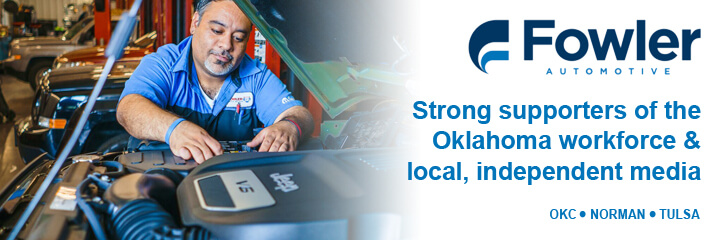








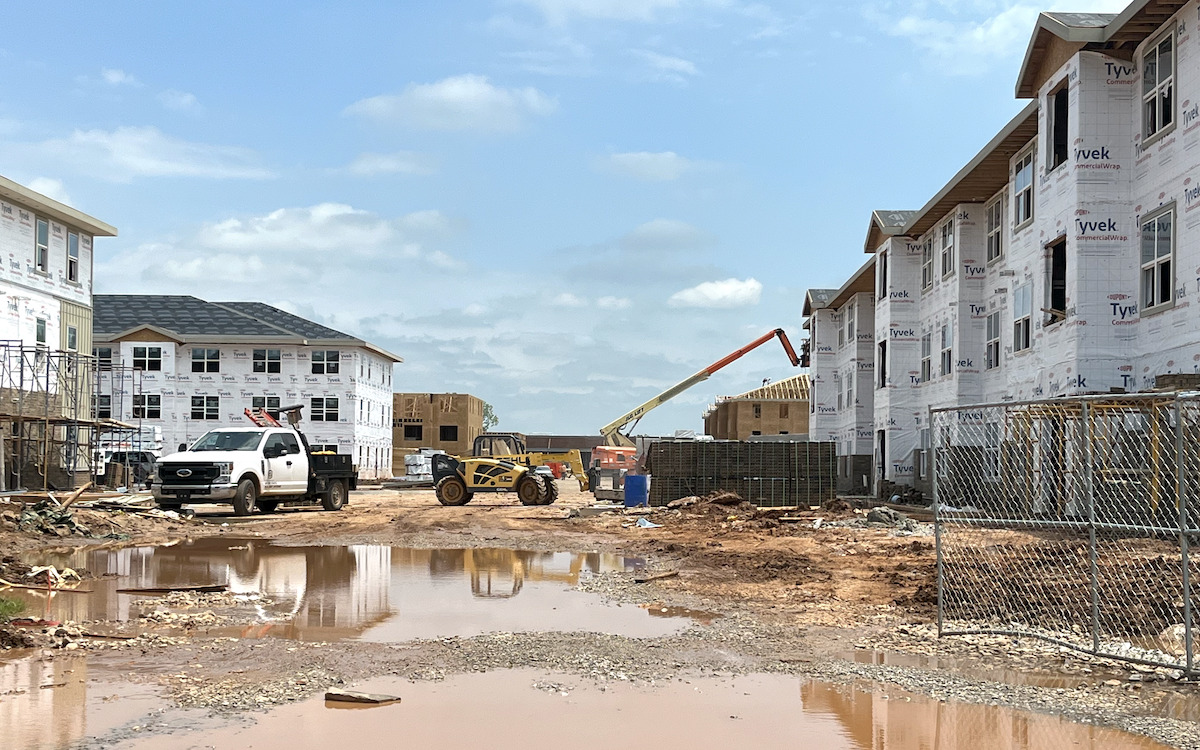 As OKC grows, rising costs create housing insecurity
As OKC grows, rising costs create housing insecurity





